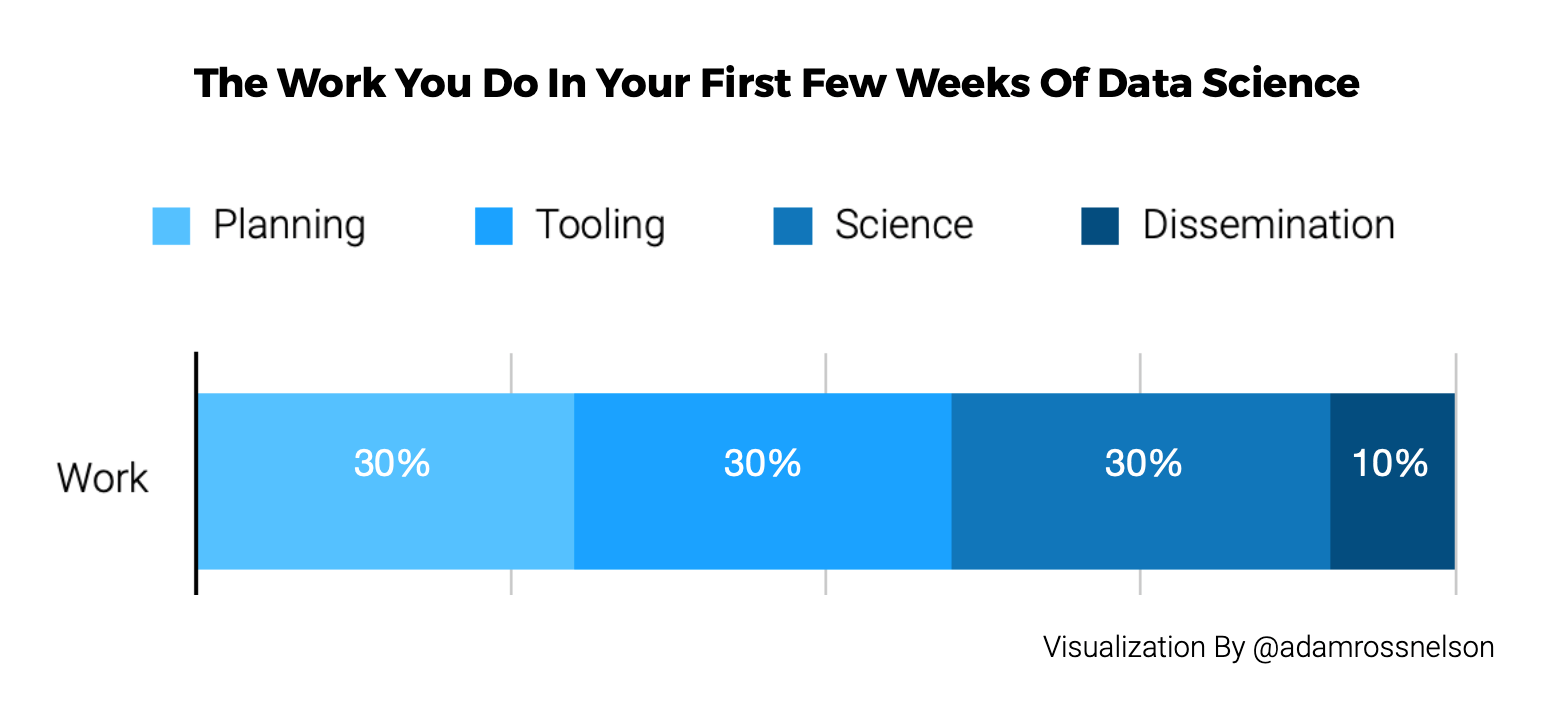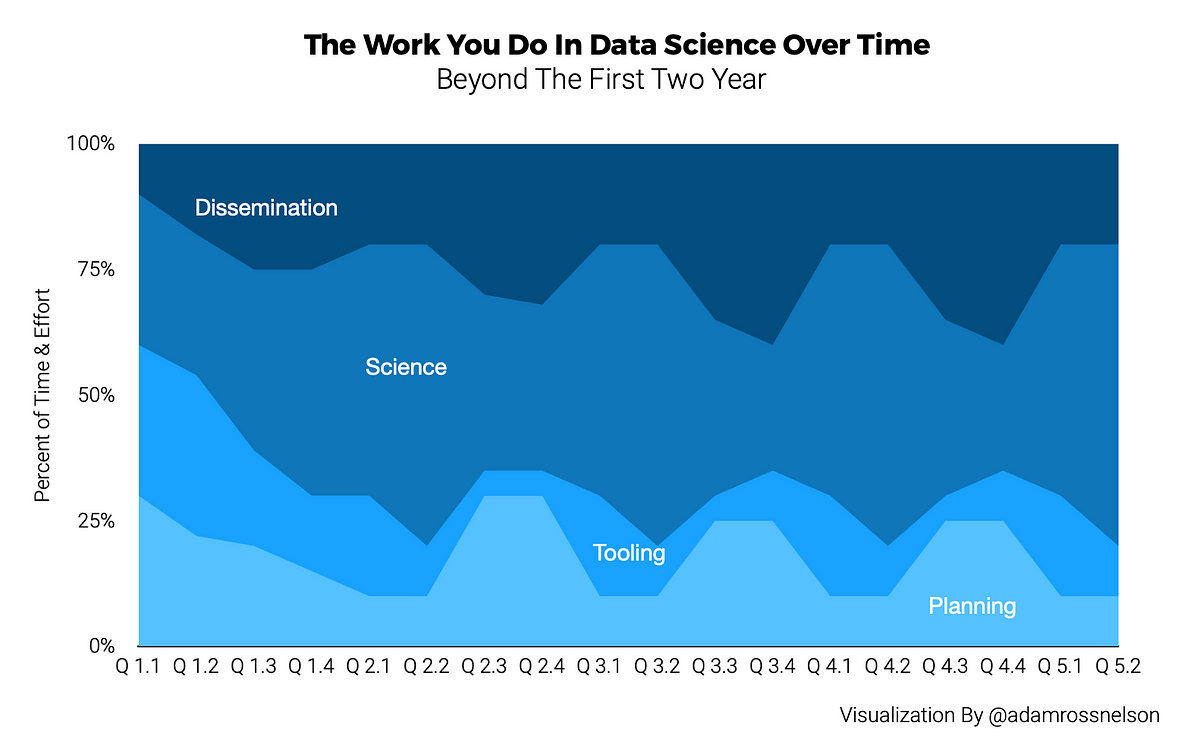Introduction
In a million ways my data science career has not gone as planned. I have shared some of my biggest mistakes. And I have shared about some of my favorite days.
This article is for anyone interested in understanding what types of work tasks they should expect from a career in data science. I also recommend this article for anyone interested in evaluating their own career. Comparing your experience to mine (or others) may assist in bringing you a sense of perspective. Below, I invite you to contact me if you are interested in entering the field. I made a late-in-life transition to data science. I would be glad to help others do the same.
There are roughly four broad high-level categories of work that data scientists perform. These include planning, tooling, science, and dissemination. A question I get often is, as a data scientist, how do you spend most of your time? I have learned from experience that the answer to these questions depends, at least in part, on how long you have been in the role; how you spend your time, changes over time.
This article will review each of these four high-level categories of work, and then explain how the distribution of work among these categories will start out and then change over time.
The Four Categories Of Work
How The Distribution Starts Out
Here is a plausible breakdown of how you will spend your time on each of these four tasks categories in the first few week.

Image Source: Author’s rendition of work performed in the first few weeks of data science.
What The Work Involves
**Planning: **The processes associated with selecting a question that needs to be answered. Sometimes finding a question is better framed as selecting a problem that needs to be solved. Planning also involves checking whether anyone else has already answered the question or solved the problem.
**Tooling: **Tooling involves selecting the tools that will be best suited for answering the question or solving the problem. This means reviewing existing tools and methods. Tooling also often means customizing existing tools or building new tools.
Science: Arguably, science could be defined as the process of asking and answering a question and then disseminating it. For purposes of this article, I define science as the time and attention given to collecting data and executing the plans laid out earlier in the process. This means, applying the previously selected tools and methods to that data. A little more in detail, this involves tuning models and parameters, plus interpreting and comparing output results.
Dissemination: This is the process of reporting results. Reporting results can occur in many ways including publication or articles or reports. This might also involve presentations for small or large groups. Dissemination is where you share the original question or problem, reveal your answers or solutions, describe your data and methods, and also be transparent about the relative strengths and weaknesses of your work.
When you spend 30% of your time on planning, over a 40 hour work week, it equates to about a day and a half or 12 hours. Over a month that that includes about 20 working days, you will spend 6 of them on planning.
Likewise you can expect to spend the same amount of time on tooling, and science. This leaves 4 hours in the week for dissemination. Or in a 20 working day month, that will be about 3 days of work on dissemination.
#work-life-balance #data-science #job-hunting #career-advice #careers
